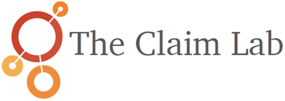January 2024 – Getting the BIG Picture

As our claim best practice expert, Mark Foerster takes a strategic view on the operational impact of Biopsychosocial in claims management.
If you missed Part 1, Click Here, or Part 2, Click Here….
Also, on December 5th at 1.00pm ET, we are taking part in a Webinar with Munich Re, discussing this very topic with input from, our valued client, Sun Life Financial. Love to see you there, Click Here to Register!
I hope you have enjoyed our journey!
Thank you
Ian Bridgman
Executive Director
Getting the Big Picture
Re-Cap: Incorporating Biopsychosocial Metrics
In the two previous newsletters, in this series, we have outlined the medicalization of disability claims management. The roots of this often over emphasis and reliance on the medical diagnosis and prognosis is the biomedical model. Singularly focusing on the biomedical model can lead to an over emphasis on the medical diagnosis and prognosis.
The biopsychosocial model emerged in the latter half of the 20th century. It expanded beyond the disease or injury to recognize the human experience of ill health. This encompasses both an objective and subjective reality. Of course, moving to consider subjective factors, by its nature, means new ways to measure ill health must be created.
In this article, we look at the life of a disability case manager and point towards pragmatically incorporating the biopsychosocial model in today’s case management, and how The Claim Lab can help!
The Case Manager Treadmill…
Long-term disability case managers have a portfolio typically of 60 to 70 active claims and any number of new claims. Naturally, claimants are often anxious not only about their health and work(place) but about the approval of their claim to replace lost work income. Achieving improvements in function to return to work is top of mind and can be fraught with uncertainty. The case manager holds critical influence in these people’s lives and with it comes a huge responsibility to accomplish both corporate goals and as best as possible satisfy claimants and their employers.
The last few years have seen a significant amount of case manager turnover. This has translated into heightened stress on case managers as they are even more time challenged. Newer case managers face a steep learning curve.

Can’t see the Forest for the Trees
To ‘pile on’ to the case manager’s challenges, there has been an acceleration, since the pandemic, in disability claims with mental health as the primary or secondary reported diagnosis. Mental health disability claims tend to be more complex given their subjective nature and require added case manager skills.
Of course, in general the case manager’s role inherently means assembling and digesting a lot of information for each claim:
…reviewing claimant and employer statements, telephone interviews with the employee claimant and their employer, including and then documenting a summary of the conversations and reviewing copious medical reports (some with illegible hand-writing, poor fax quality, medical acronyms and short hand…) seeking the nuggets of pertinent details to understand fully the claimant’s issues.
Then time is needed to proactively think and act creatively on how the claimant can best be helped to accelerate their return to work (or designate the file for permanent status and ensure social security offsets are pursued).
It can be easy for even seasoned case managers (let alone newer people), with time pressures and complexities, to not be able to see the forest (the big picture of the claimant holistically) for the trees (all this information).
A Path Out of the Woods
If you embrace the biopsychosocial model as a framework for disability case management, then we know we are missing critical psychosocial observations. The Claim Lab’s Questionnaire, with responses funneled through data analytic programs, has proven to tease out valuable psychosocial factors.
The insights are then reported back to the case manager in a clear concise way with important claimant factors highlighted.
This allows the case manager to efficiently see which topics need greater probing with claimants on selected claims. It quantifies the drivers such as motivation, workplace, family, etc. to provide context to abilities and impairments.
In our research we see Workplace (issues) as a major aspect of many disability claims. Knowing that the Workplace may be the main claim driver, could it not be more valuable for a case manager to introduce workplace dispute resolution/coaching professionals?
Yes, the claimant is anxious or depressed, but traditional mental health assistance tools such as cognitive behavior therapy and/or medication may do nothing to resolve the root cause of the claimant’s workplace distress. In fact, in some cases these treatments have elongated duration and incurred unnecessary expense.
Seeing the Forest
From a portfolio claims perspective, using a psychosocial questionnaire, produces a systematic, more efficient and impactful disability claims management process. In essence, the questionnaire results with priority risk scores for each claim, allowing a streaming of actions. Some claims can move to a light touch oversight as they are on the road to self-resolution.
Other claims will require case manager intervention, a high touch process. The psychosocial knowledge lets a case manager focus in on these claims with a much more complete picture of all aspects of the claimant’s life. The case manager will have greater time and thought to spend on these claims, if other claims in their portfolio can be relatively straight through processed. Think of this psychosocial questionnaire tool as a virtual smart assistant to a case manager.
And the beauty of incorporating The Claim Lab Questionnaire into your process is it provides a consistent, repeatable, and proven approach to quantify the psychosocial environment, claim after claim.
If you want to discuss what this in more detail, please contact us at info@claimlab.org.
